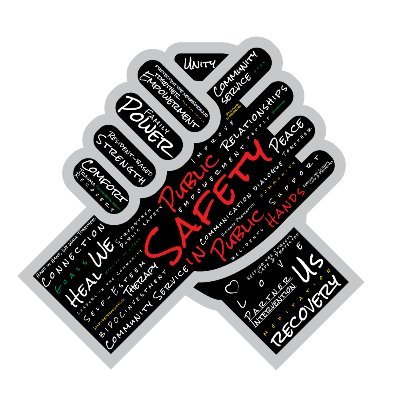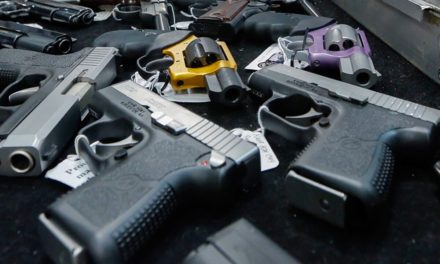Logo of Newark Street Team.
Memphis Mayor Jim Strickland was elected to reduce crime and the failure to accomplish that is clearly a point of persistent irritation.
It’s a rare weekly email that he doesn’t talk about crime and why its rise is not his fault. So far, prevalent themes are that there are too few sworn police officers, a “revolving door” in criminal court, bonds that are too low, juveniles that are too violent, sentences that are too light, and so it goes.
The missives have been heavy on law and order anecdotes and talking points.
To its credit, the Strickland Administration has added some recreational programs as after-school, weekend, and summer alternatives for juveniles, but it has failed to step up and seize the opportunity to be a leader for public safety reform.
So far, Memphis City Council has approved some new enforcement policies for MPD but so far even that has stopped short of the scope of public safety reforms that are needed and that we see in other cities where mayors have led the movement to create smarter crime prevention policies and programs.
In Memphis, the mayor seems content to wait for the outcome of the U.S. Department of Justice review of MPD rather than take ownership and provide leadership of a deep and comprehensive evaluation of law enforcement in Memphis. After all, whatever problems have developed and whatever shortcomings that are now glaringly obvious, they were allowed to exist during his terms.
A Symptom of a Problem
While we wait for the DOJ evaluation, MPD proves again how seriously it needs help.
In the midst of scandals that have shaken the public’s confidence, MPD rolls out a plan for a special unit – Juvenile Crime Abatement Program – that will pick up juveniles downtown who aren’t appropriately dressed (whatever that means these days), are dancing in the street, and are not with an adult. There was even talk about stationing an undercover police officer on the roof of AutoZone to spot “disturbances.”
It’s already been called Scorpion for Kids and Juvenile Stop and Frisk, but it is a symptom of a tone deaf police department. It also feels like it is part of a continuing campaign to label juveniles as THE root of the crime problem in Memphis. And it was rolled out despite obvious serious questions about its constitutionality and the fact that it clearly depends on profiling.
It’s hard to imagine how a program like this got as far as it did without anyone in the police department or city administration waving a red flag and slowing it down so more partners like Downtown Memphis Commission could be involved and more grassroots leaders could be consulted.
Its development is tantamount to admitting that MPD has learned nothing in the wake of the Tyre Nichols killing.
It’s hard to imagine many things more combustible than police officers lecturing and taking into custody teenagers. And that MPD planned to do this as the Beale Street Music Festival was scheduled to begin with its thousands of teens defies common sense.
Quit Digging
A recognized expert in police and public safety, John Jay College of Criminal Justice, in its Future of Public Safety, writes that “community voices – particularly those of young people – need to be included and respected in redefining public safety. Members of the community should be given space to be real partners in public safety.”
That’s an approach Memphis should think about trying. After all, whatever is being done now isn’t working. At a time when national media have decided that MPD is a national scandal and disgrace, it’s worth City Hall remembering that when you find yourself deep in a hole, you should quit digging.
Perhaps, what should be done is to get out of the hole and take a leadership position as a police reform city administration. It seems that despite the needs for reform that became so clear in the wake of the murder of Mr. Nichols, city government remains largely fixed on legacy police philosophy, functions, structure, and management. That too was a lesson from the proposal for the Juvenile Crime Abatement Program.
Former Shelby County Sheriff and Mayor Mark Luttrell notably said crime prevention is a “three-legged stool” – suppression (enforcement), prevention, and intervention. So far, most discussions in City Hall remain focused on suppression while prevention and intervention remain lower priorities.
Transparency Begins At Home
This isn’t to say that Mayor Strickland is wrong when he calls for more transparency and more data from the criminal justice system, including data about the unacceptable backlog of cases Criminal Court that are accepted as normal. The mayor’s request is on target and long overdue, with him writing to criminal justice officials: “I ask you to be transparent and open to the public.”
That standard should also apply to city government itself. Without in-depth and multi-faceted data, the public is left without the measurements it needs to determine what it is getting for paying $2.5 billion every 10 years for police services (38% of the City of Memphis budget).
Put simply, if the mayor calls for others to be more transparent with their data, he should do the same. If Memphis is to have a serious debate about police reform and make decisions about the future, it needs a data hub with a variety of in-depth law enforcement measurements that include a breakdown of 911 calls by age, gender, and ethnicity; the number of calls – homelessness, mental health, substance use, the transit system, and school safety – that could be handled by civilian employees rather than commissioned officers; the number of arrests disaggregated by neighborhood, race, gender, and ethnicity; the locations where police are most frequently dispatched; the percentage of time officers have their body cameras activated; a breakdown of how police spend their time; the percentage of officers who live in Memphis; the race and gender of applicants and recruits at the training academy; instances of officers firing firearms; percentage of crimes that are solved; and use of force complaints. All of the data should be disaggregated by neighborhood, race, age, gender/sexual identity, and more, in order to target any disparities in enforcement and informing the broadest definition of public safety. But that’s not all, other relevant data points that influence public safety should also be included, such as poverty, educational attainment, unemployment, labor penetration, health and wellness, and more.
Other Cities Are Succeeding
Unfortunately, Memphis city government doesn’t have a strong tradition of transparency so this will require a shift in its culture. (For at least a decade this blog has recommended that every study, every report, and every analysis paid for by taxpayers should automatically be posted online.)
Memphis has a unique moment in time. It’s all about seizing this opportunity to engage in the kind of introspective assessment that is needed in the wake of the killing of Tyre Nichols, the controversy about police training, and the lowering of recruitment standards.
Memphis has a culture that leads it often to aim too low. When it is pointed out that other cities are accomplishing innovative things in their downtowns, in fighting poverty, and in reducing violent crime, the answer is often, “well, we can’t do that in Memphis; we’re just too different.”
Newark was once such a city. Crime was high, City Hall looked for big projects to solve its problems, incomes were flatlining, and the conventional wisdom was that nothing could be done. Rather than look again for a magic answer, with the help of Rutgers University, the mayor and city officials took ownership of the crime problem and developed a collaborative public safety plan that brought homicides to a 60-year low and reduced the number of shootings by 35%.
If Newark Can Do It…
Newark did it by balancing the roles of government, residents, and partners in the implementation of a bold, innovative plan. Most of all, city government treated residents as resources to be used to fight crime at the neighborhood level. For example, it set up street teams made up of people who were formerly incarcerated or arrested for street crimes who would take to the streets in their neighborhoods to convince others to avoid involvement with the criminal justice system.
Newark’s outcome: an ecosystem that looked to their own people and grassroots leaders to redefine, build, and help implement public safety.
It is not alone. A number of cities are using a public health approach to reimagine public safety and to disaggregate the responsibilities of the police so commissioned officers aren’t in situations that call for mental health professionals, aren’t performing duties that can be done by civilians, and supported by a 911 system whose staff have the skills to determine who should answer each call.
Here’s the priority: to end the role of armed officers answering calls that pose no imminent threat or danger to others.
Albuquerque is one of many cities forming a Community Safety Department that takes a broader view of public safety; Austin formed a task force that reimagined public safety; Milwaukee created an Office of Violence Prevention; Oakland created a Reimaging Public Safety Task Force that developed an extensive public input process that resulted in 162 recommendations for improvements; Chattanooga created the Policing and Racial Equity Dashboard; Columbus, OH, created the Department of Justice to review he police; Indianapolis developed a Mobile Crisis Assistance Team; and Colorado Springs created the Community Response Team.
Electing To Put Public Safety First
It’s a good time for Memphis to join the movement of cities redefining public safety and implementing innovative strategies to reduce violent crime and racial injustice.
A couple of weeks ago, a technology executive in San Francisco was murdered and it sent shock waves through the city with angry headlines that already this year, San Francisco had 12 murders. By comparison, Memphis has almost had 10 times more – 112.
The fact that only about half of the crimes in Memphis are solved should be reason enough for a review of police strategies, deployment, and more with an eye to better results.
It’s clearly time for doing something different. Violent crime has risen 40% during the present city administration and the public is demanding ways to reduce crime. Perhaps, the 50-50 chance of a crime being solved is a calculation made by people committing crimes in Memphis.
Memphis needs the next mayor to be prepared to join the national movement to reimagine public safety that is achieving encouraging results. That’s why in the upcoming election, nothing is more important that electing someone who can do what leaders are supposed to do – educate and motivate their constituents about how doing the same and expecting different results is maddening and how new approaches to public safety can work.
If there’s ever been a time for new thinking, it is now. If Memphis squanders the current motivation for reform and it continues to pursue one-dimensional law and order solutions, it will be judged harshly by history.
***
Join us at the Smart City Memphis Facebook page for daily articles, reports, and commentaries that are relevant to Memphis.





Excellent piece Tom.
I’m hoping someone can explain to me why a Mayor, claiming to be set on reducing violent crime, would turn his back on a local non-profit with a national reputation offering millions of dollars in programming to address the issue. I will never understand the ignorance which has become the Hallmark of local politics. George